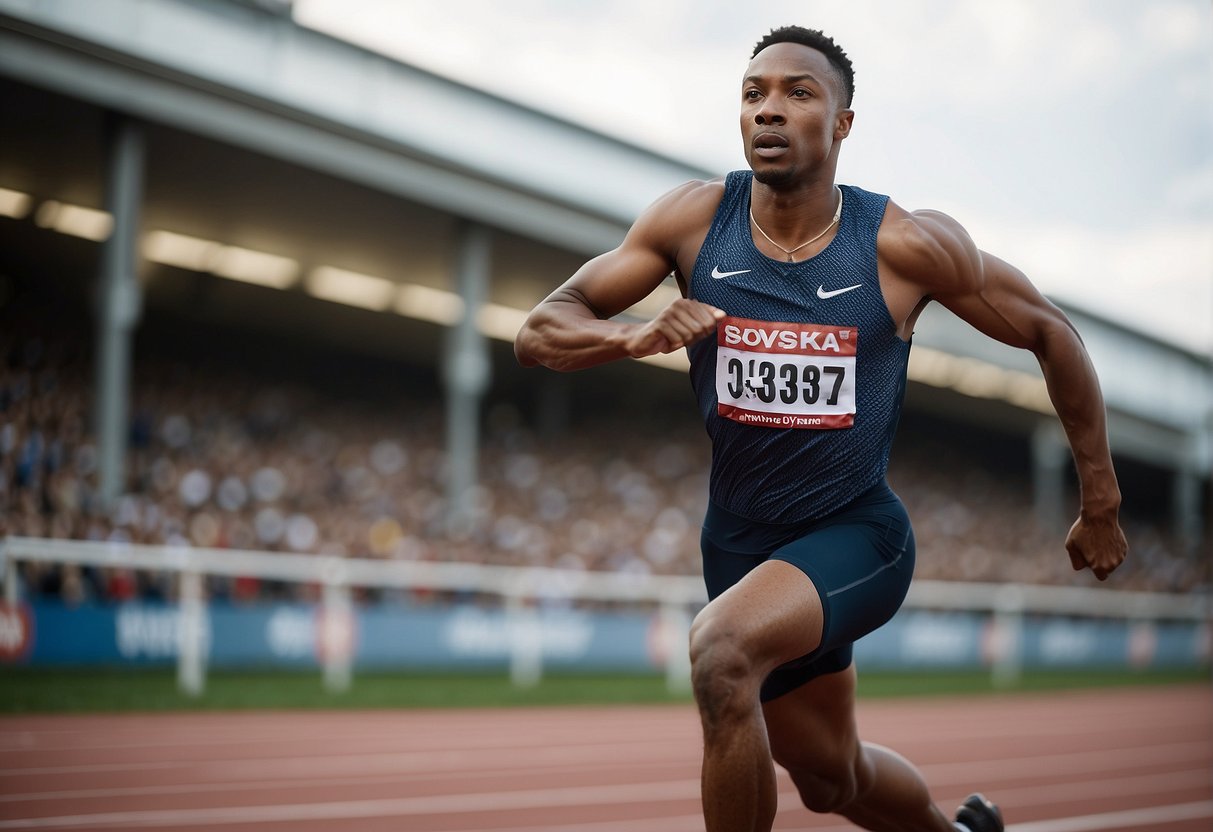📦 FREE Shipping
How Fast Can the Average Human Sprint 2024: Surprising Insights

Pushing the limits of speed, the human body can perform impressive feats. “How Fast Can the Average Human Sprint” breaks down the factors influencing our sprinting capabilities.
Essentials of Sprinting Speed
Importance of Running Form
Your running form is paramount to achieving top sprinting speeds. Every aspect, from foot placement to arm swing, works together to streamline your motion and reduce drag.
Proper technique allows you to channel your power efficiently, maximizing each stride. Pay close attention to keeping your back straight, your head up, and your arms moving with your legs for the most effective energy transfer.
Role of Strength and Power
Powering your sprint are your legs; they need to explode with strength. Infuse your training with exercises that build muscle strength and power, such as squats, lunges, and deadlifts.
Focus on the fast-twitch muscle fibers in your legs, as these are crucial for those short, sharp bursts of speed that define sprinting.
Training Methods to Increase Speed
Incorporate various training techniques targeting your aerobic and anaerobic systems to escalate your sprinting speed.
- Interval Training: Rotate between high-intensity sprints and rest periods—for example, 30 seconds of all-out sprinting followed by one minute of walking.
- Plyometric Exercises include jump squats and box jumps that enhance your explosive power, which is critical for a faster sprint start.
- Sprint Drills: Practice sprint-specific drills, like hill sprints and parachute runs, to build resistance and improve your leg turnover rate.
How Fast Can the Average Human Sprint?

Average vs Elite Sprinters
The average sprint speed of an adult male is 19.52 mph (31.4 km/h), while the average for adult females is 17.12 mph (27.55 km/h). However, when you look at elite sprinters, those numbers soar.
Let’s talk about Usain Bolt, the fastest human, who achieved a top speed of 27.8 mph (44.72 km/h) during his world-record 100-meter sprint in 2009. In contrast, your speeds might range closer to the average thresholds unless you’re an avid runner yourself.
Influencing Factors on Sprint Speed
Several elements play into how fast you can sprint. Think genetics, for a start; they can dictate your muscle composition and response to training. Training intensely could boost your sprint speed; explosive power and speed workouts are your friends here.
Age, gender, and body composition also have roles. Did you know that male sprinters often tend to be faster than females due to muscle mass and strength differences?
Records and Comparisons
When we set the bar, we look towards world records. Florence Griffith-Joyner set a record of 10.49 seconds for the women’s 100m sprint, a title that’s stood since 1988.
As for men, Usain Bolt’s world-record sprint of 9.58 seconds leaves everyone else in the dust. To show you how impressive these records are, the fastest human sprint speed exceeds that of a city bicycle cruising through traffic!
Physiology and Equipment Influences

Biomechanics and Muscle Composition
The science of biomechanics influences how effectively you convert muscular force into sprinting speed. Your muscle mass and fiber composition—specifically the ratio of fast-twitch to slow-twitch muscles—dictate your potential for explosive power.
- Fast-twitch muscles are essential for quick, powerful bursts of speed; improving their strength can increase your sprinting capability.
- Technique: Proper sprinting form helps maximize force application and speed; a forward lean and optimal stride length assist in practical ground reaction force usage.
Running Gear and Their Impact on Speed
The quality of your shoes and running gear directly correlates to your sprinting performance. Heavier equipment hinders speed, while lightweight, aerodynamic options provide an edge.
- Shoes: Look for lightweight yet supportive options that complement your running style.
- Clothing: Aerodynamic, moisture-wicking apparel cuts resistance and may boost comfort and speed.
Nutrition and Recovery
Your body’s fuel and recovery strategies are pivotal. Adequate hydration, balanced nutrition, ample sleep, and proper recovery practices are vital to minimize fatigue and maintain peak performance.
- Hydration and Nutrition: A nutrient-rich diet fuels your muscles for sprinting; staying hydrated is crucial for optimal physiological function.
- Sleep and Recovery: Quality rest and recovery protocols, such as cool-down exercises and appropriate rest days, repair muscles, and prepare you for your next sprint.
FAQ:
How many mph can the average human sprint?
The average human sprint speed is around 12 to 15 mph.
Is 20 mph fast for a human?
Yes, 20 mph is fast for a human and is closer to elite sprinter speeds.
If this article about the question: “How Fast Can the Average Human Sprint” helped you, don’t forget to leave us a comment down below about what you think of the article.


